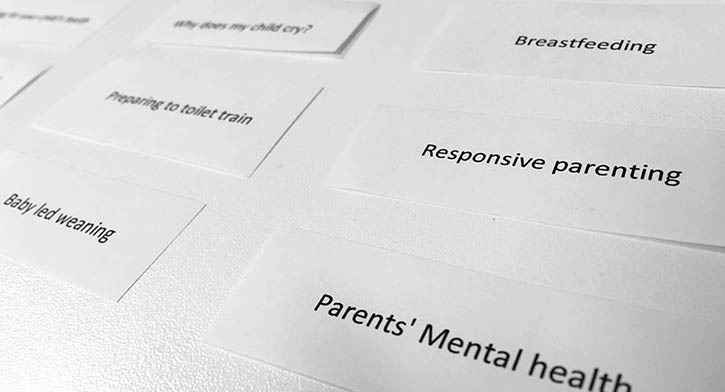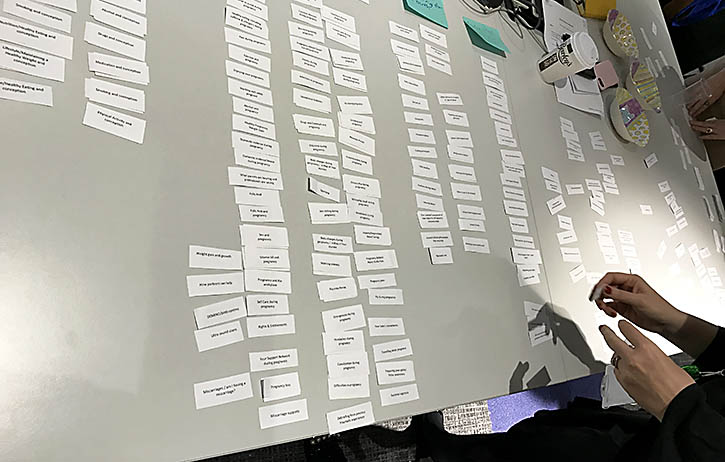Published by: Ulla Devitt, User Experience Lead.

In Finland, where my family are from, Tiedonantoarkkitehtuuri is the word used to describe organising, structuring, and labelling content in an effective and sustainable way.
We’re working on a new online child health and pregnancy resource to meet the needs of one of our largest user groups: parents and parents-to-be.
This project is a big one, and a first for us in a few ways:
- This content will be integrated with the rest of HSE.ie, not a separate stand-alone website, in-line with our new Digital Roadmap.
- It’s the largest batch of content that we are applying our new content design principles and style guide to so far.
- It’s our first big project to incorporate the results of our Top Tasks project with Gerry McGovern.
- It will be our first beta site - a limited release before launching to all our users - allowing us to get live feedback so we’re sure it’s working how we want it to before we go live.
With a vast range of topics to cover, how we group the content and structure the website is critical. All users, but especially busy parents, deserve an online service they can easily navigate so they can find the content they need, when they need it, fast.
Card sorting helps us to do just that.
Card sorting
Card sorting shows us how people understand and categorise various topics of information so that we can then replicate this on our website.

It’s useful because it’s cheap (all you need is a pen and some cards) collaborative (you get to bring users together to sort and group the cards in a way that makes sense to them) and relatively quick to do.
Here’s how we did it:
Step 1 - Content inventory
First, we made a list of all the new content and chose the most important topics to write onto small cards for people to sort.
Step 2 - Open and closed card sorting
We invited 12 users to take part in an open and a closed card sort.
In an open card sort, participants get to name each category of the cards they’ve grouped in a way that they feel describes the topics in that group.
In a closed card sort, participants sort cards into pre-defined categories that we named in advance.
For example:
We divided our participants into 2 groups of 6. 1 group participated in a closed card sort, the other in an open card sort.
Step 3 - The results
5 groups emerged from the card sorting session:
- Getting pregnant
- Pregnancy
- Labour and birth
- Babies
- Toddlers and parents
We discovered that some of the cards were confusing to people. These labels need refinement.
The results of the open and closed card sorts were similar. So, we ran a second open card sort with another group of 7 participants. This helped us to refine the website structure further as each of these groups of cards will become a section on our website and form the basis of our information architecture.
Prototyping
After the card sort, we could see a logical website structure beginning to emerge. We now had the basis for a prototype. We used this prototype to test the new structure of the website with real users.
Lessons learned
As this is a new process for our team, there are a few things we would do differently next time:
- We used too many cards during the initial card sorting workshops - in future, we will limit this to 40 at most.
- The use of physical cards meant the process of analysing the results was very laborious. We are now using online card sorting software. This provides a more streamlined process for results analysis.
- It would be useful to run 3 rounds of open and closed card sorting exercises to establish consistent patterns
- Card sorting deals with topics rather than tasks so we should always cross-reference the results against the results of the task analysis.
It’s important to us that we validate all the decisions we make about our website based on user research, data and evidence. Watch out for more blogs like this as we share the process and results of our user research projects.